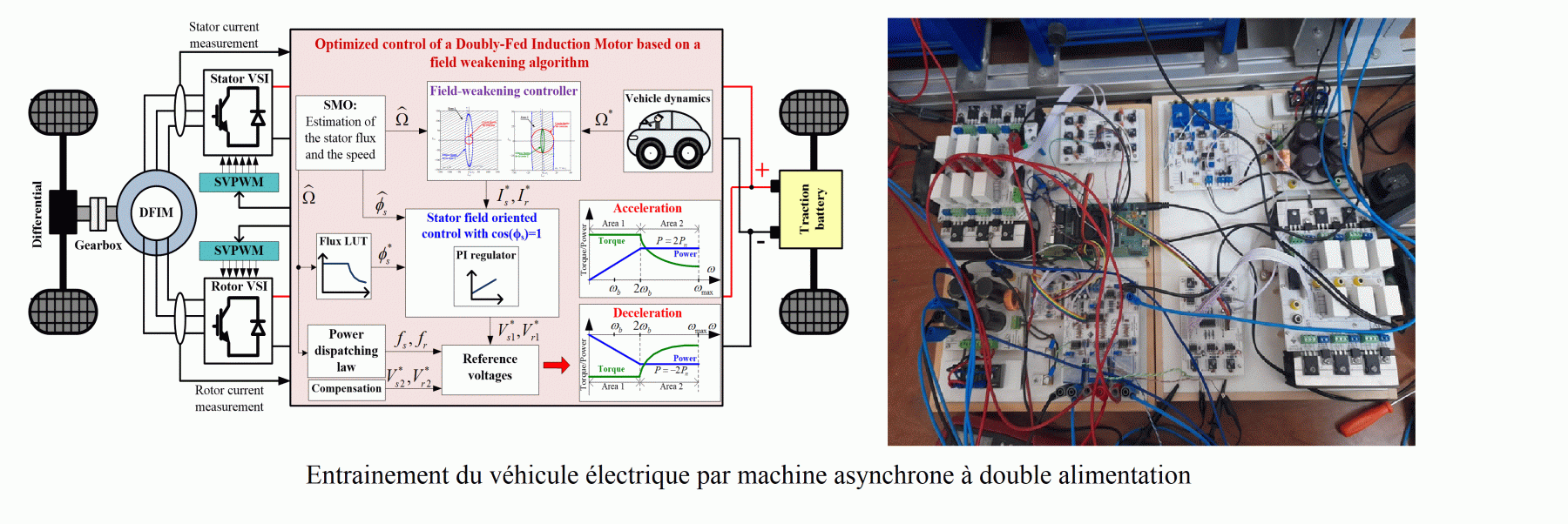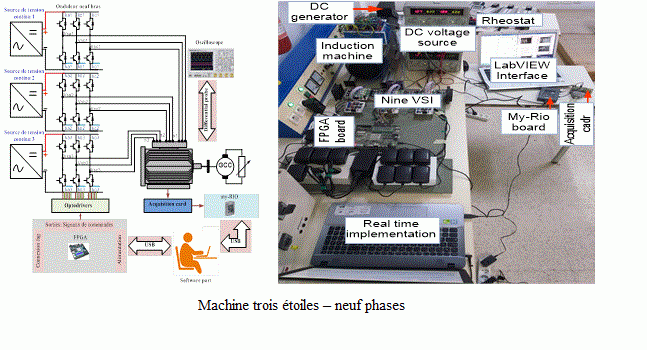The project is structured around a number of priority research themes at both national and international level. These include autonomous vehicles, all-electric and hybrid vehicles, the reliability and safety of transport systems, and the integration of fifth-generation roads as intelligent, connected and cooperative systems.
The power density of converters is continually increasing to meet growing needs in terms of power integration. This is made possible by the development of new wide-bandgap power component technologies such as silicon carbide (SiC) and gallium nitride (GaN). It is therefore essential to study the impact of these new-generation GaN and SiC components on the EMC and reliability of the power converters used in these applications.
This project is being developed in collaboration with Prof. Moncef Kadi's team in charge of the Electronics and Systems Department at IRSEEM, Rouen-France.
Leader:J. Ben Hadj Slama,
Members:Eloued Sonia,Mohamed Belghith, Ahmed Taleb Cheikhna
In this project, we are working on the automatic optimization of the typon layout in order to reduce conducted and radiated electromagnetic disturbances in the converter. An automatic coupling has been implemented between Simplorer software for fine electrical simulation, Ansys' Q3D software for calculating the electromagnetic coupling matrix between the various parts of the circuit, and Matlab for automatic layout generation and genetic algorithm optimization. The proposed methodology has been validated experimentally.
This project is being developed in collaboration with Prof. Christian Vollaire's team in charge of the electromagnetic compatibility (EMC) activity at the Ampère laboratory at the Ecole Cenrale de Lyon-France
responsible: J. Ben Hadj Slama,
Members: Hajji Omessaad, Belloumi Wided
Estimating the state of charge (SoC) of batteries in electric vehicles is essential to ensure safe and efficient operation. In this project, we are working on the development of state observer-based algorithms: Extended Kalman Filter (EKF) and Smoot Variable Struture Filter (SVSF). We have proposed a fuzzy logic technique for estimating battery parameters, taking into account the state of charge and ambient temperature. To achieve this, we have used a rich database collected from various battery charge and discharge tests under different ambient temperature conditions.
This project is developed in collaboration with Mr. Bilal Manai Professor at Cégep de l'Outaouais, Canada.
Team leader: Jemmali Sabeur
Team: Hamouda Mahmoud, M. ben Lazreg,
In this project, we calculated reachability between different points along the vehicle's path, using an accessibility analysis scheme as a reliable risk indicator. To do this, we used interval analysis to propagate the uncertainties influencing vehicle dynamics. This boils down to solving an ordinary differential equation with uncertain variables and parameters via an interval Taylor series expansion method. Depending on the bounds obtained for the achievable sets, a decision is made regarding navigation safety.
Once a risk of collision is detected, the risk management layer acts to update the control parameters to influence the location of the most likely reachable space, control the critical situation and guarantee good reachability, while avoiding any risk of the vehicle colliding with the forbidden zone. Several simulation results demonstrate the safety, efficiency and robustness of the proposed global navigation under uncertainty.
This project is being developed in collaboration with Professor Lounis Adouan of the Heudiasyc laboratory, Université de Technologie de Compiègne, Compiègne, France.
Manager: Nasri Othman
Team: Ben Hadj Slama Jaleleddine, Ben Lakhal Nadhir Mansour
In the first phase of this project, we opted for the integration of the double-fed asynchronous machine as the drive system. It should be noted that this type of motor is highly capable of operating at high speeds. On these machines, we are implementing non-linear and non-conventional control structures, essentially integrating control and observation of sliding-mode states of the system.
In a second step, we have introduced multi-stator asynchronous machines with the ability to segment the power developed by the drive systems. These machines, generally of high power, are used in marine propulsion and high-power systems. We have built a test bench for a three-star, nine-phase machine. The test bench consists essentially of the high-power part (nine-arm inverter) and its open-loop control. The closed-loop control is currently being finalized.

Vehicle drive by dual-powered asynchronous machine

Three-star machine - nine phases

